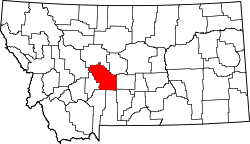2010 census
At the 2010 census there were 939 people in 433 households, including 255 families, in the city. The population density was 929.7 inhabitants per square mile (359.0/km2). There were 563 housing units at an average density of 557.4 per square mile (215.2/km2). The racial makeup of the city was 97.2% White, 0.1% African American, 0.3% Native American, 0.4% Asian, 0.2% from other races, and 1.7% from two or more races. Hispanic or Latino of any race were 1.4%. [16]
Of the 433 households 22.2% had children under the age of 18 living with them, 49.4% were married couples living together, 7.9% had a female householder with no husband present, 1.6% had a male householder with no wife present, and 41.1% were non-families. 37.4% of households were one person and 19.6% were one person aged 65 or older. The average household size was 2.13 and the average family size was 2.75.
The median age was 51.2 years. 19% of residents were under the age of 18; 5.1% were between the ages of 18 and 24; 18% were from 25 to 44; 31.4% were from 45 to 64; and 26.3% were 65 or older. The gender makeup of the city was 49.8% male and 50.2% female.
2000 census
At the 2000 census there were 984 people in 443 households, including 265 families, in the city. The population density was 1,069.1 inhabitants per square mile (412.8/km2). There were 567 housing units at an average density of 616.0 per square mile (237.8/km2). The racial makeup of the city was 96.24% White, 1.42% Native American, 0.20% Asian, 0.10% Pacific Islander, 0.51% from other races, and 1.52% from two or more races. Hispanic or Latino of any race were 1.93%. [17]
Of the 443 households 25.3% had children under the age of 18 living with them, 48.1% were married couples living together, 8.4% had a female householder with no husband present, and 40.0% were non-families. 37.0% of households were one person and 17.8% were one person aged 65 or older. The average household size was 2.16 and the average family size was 2.84.
The age distribution was 22.4% under the age of 18, 6.9% from 18 to 24, 22.5% from 25 to 44, 26.9% from 45 to 64, and 21.3% 65 or older. The median age was 44 years. For every 100 females there were 94.9 males. For every 100 females age 18 and over, there were 92.9 males.
The median household income was $28,229 and the median family income was $34,342. Males had a median income of $23,403 versus $13,929 for females. The per capita income for the city was $13,836. About 11.6% of families and 13.3% of the population were below the poverty line, including 16.5% of those under age 18 and 11.0% of those age 65 or over.


